From Vlorë to the Ottoman town of Berat, Albania
From Vlorë to Berat
Short description. I left from Vlore, crossed the town of Fier, and reached the archaeological site of Apollonia. I returned to Fier and chose the best road toward Berat, where I stayed for several days.
Long Description
At the Adriatic Sea, a wild wind blew at Cekodhima Camping, but it was warm and the waves were mild. I slept well the previous night because this time I parked the car under the trees. Thus, I had shade in the morning and it wasn’t too hot inside the car. While I was having breakfast, a dog from the campground played with me. It bit me, licked my hand, and acted rather like a cat. Moreover, it ate almost all my byrek (Albanian pastry) and thus my breakfast was gone.
I headed toward the town of Fier, planning to go to the archaeological site of Apollonia. The highway appeared only on the map, though, for approximately 20 km. After the small town of Levan, it turned into a normal road and passed several villages. At one point, a signpost showed me that I could take a shortcut to Apollonia. I followed the signpost but the asphalt soon ended in the village of Shtyllas.
In Shtyllas, some workers shouted “Apollonia” all together and laughed when I stopped puzzled at the end of the road. There also was a Romanian man in their group. He recommended me to follow an off-road that would have taken me to Apollonia within 2 km. When he showed me the way (a troublesome road anyway), another man suggested me not go there. He kindly whispered me that the Romanian would try to damage my tires and hurt me. Eventually, I turned back and continued toward Fier. At least, most of the road was paved with asphalt, but it still had lots of potholes and sections under construction.
I crossed the town of Fier, lined with a series of communist, dusty and gray buildings. Then I passed many concrete bunkers on the outskirts of the town. At the edge of a village, I arrived at the archaeological site of Apollonia. The sited comprised Hellenistic and Roman ruins, such as a sacred path, Apollo’s obelisk, agora, storage, and tank. Acropolis, bastion, Odeon, religious sanctuary, buleuteriorn, library, an arch of triumph, temples, thermal complex, shops, gates, and fortification walls. Apollonia wasn’t entirely excavated, but it featured mosaics protected with sand and a few impressive, reconstructed temples.
I noticed many concrete bunkers nearby Apollonia. Also, concrete trenches from the WWII still resisted on Apollonia’s acropolis. Next to the archaeological site, St. Mary’s Monastery housed the first archaeological museum in Albania. The monastery had a Byzantine church with remnants of interior frescoes. Leon Rey Restaurant (French archaeologist who excavated Apollonia) sat at the top of Apollonia’s site. I drank a frappe there, while the young waiter, Vasi, was asking me lots of questions. He was 18 years old, but he didn’t like to stay at home. During his holidays, he preferred to work and make his own money. His mother was of Greek origin, but he only lived in Greece for the first four years of his life. For this reason, he didn’t remember his mother-tongue. Vasi lived in Fier and dreamed to have a campervan and travel the world.
After exploring Apollonia, I left for Berat. The road passing Verbas and Roskovec towns was good enough. I dealt only with a few sections of bad road with potholes. In Berat, I went to the guesthouse where I had a booking, between the new and the old town. The owner seemed nice, but the central area was interspersed with communist, horrible buildings, dusty and sordid.
The first day in Berat
Short description. I dedicated this day to the exploration of Berat’s Fortress (kala). After entering the main gate of the fortress, I passed some churches with colorful frescoes. Then I walked among the tangled alleyways of the fortress. In the evening, I explored the Islamic center, which had a mosque and a Koranic school (madrassa).
Long description
Known as the “city of the 1000 windows,” Berat was listed as a UNESCO heritage site due to its rare examples of typical Ottoman architecture. Old Berat included the medieval Fortress atop of the hill, still inhabited (kala). Additionally, the neighborhoods that sat at the foot of the hill – Mangalan (the Ottoman district below the fortress) and Gorica (the Ottoman district over the Osumi River). Berat still featured the coexistence of various cultural and religious communities. The traditions of the Ottoman Islam had respected the Orthodox Christian ones. Mosques sat just across churches. The medieval fortress housed 10 Byzantine churches from the 13th-century (with richly colored frescoes) and ruins of Ottoman mosques.
From the town’s center, I climbed up the steep street that led to the original castle. I passed through the large fortified gate and then strolled the streets to the St. Mary’s Cathedral. Rather a church of modest dimensions, the cathedral housed the Onufri Museum with old icons. After that, I wandered various alleyways until I reached the western part of the fortress, packed with Orthodox stone churches. A lady had the keys from the churches and strategically sat there. She offered to open the churches for me, in exchange for a small tip, of course. The churches had facades identical to the neighboring houses. If I hadn’t entered inside them, I’d have never guessed that St. Mary of Blachernae and St. Nicholas were such authentic churches. They featured richly colored Byzantine frescoes and a solar mosaic paved in the central floor.
From the church of the Holy Trinity, I climbed to the castle (the most fortified point of Berat’s fortress). It comprised the ruins of two mosques, a palace, and a water tank covered with weeds. The terrace of the castle was very animated. I enjoyed my daily frappe and the authentic atmosphere of the cafe, including a lady who was knitting baby woolen boots.
A local man invited me to buy his fruits when I reached the entrance of the castle overlooking the Osumi River. He said he had picked them directly from his garden (plums, nectarines, apricots, pears). A small casserole of fruit cost only 100 Leke (less than 1 euro). I had no place where to put them, though. Moreover, it was very hot outside, and I had to turn him down. From there, I strolled down to the fortress’s main entrance. I had lunch at the traditional Onufri restaurant (homemade meatballs and salad) and relaxed for a while.
I wandered the streets of Berat’s fortress, picturesque and popular for wedding pictures. Once inhabited by craftsmen and merchants, the fortress preserved the vernacular architecture of the traditional housing in the Balkans (18th-19th centuries). The local architecture featured tall houses adapted to the local terrain. The dwellings developed on several levels and firmly stood into the steep terrain. Some streets had pavement of whitish stone (very polished). Black, more adherent stone could be found randomly on other streets.
Even the gutters were made of stone drilled with holes for water. Domestic garbage was placed in a bag and hung in a nail on the exterior wall of a house. From place to place, a ring nailed into the pavement once served to anchor the horses. In this thrilling scenery, many houses seemed abandoned, though. They had a padlock on the door, broken windows, or graffiti on the walls.
Fresh homemade eggplant salad smelled on a narrow street lined with white stone houses. A lady came out from a courtyard and shook out the rugs. The secondary sloping streets were full of tall grass and weeds, hard to walk through. Cocks and hens flew through courtyards. Frightened cats searched for food in garbage bins. Soft music came out from a courtyard and houses hummed with housewives cooking delicious dishes. The most enterprising ones opened a guesthouse or a restaurant. At one point, a man was nailing his signpost toward the newly-opened Vasi Guesthouse.
Fig-trees, apricot-trees, and pear-trees grew in people’s courtyards, behind massive stone walls. When they didn’t cook fruit marmalade (oranges, figs, or plums), ladies sat in front of their house. They knitted slippers, socks, hats, and woolen boots for babies. Or they crocheted macrame and decorated tablecloths, napkins, and handkerchiefs with embroideries. Then they invited people to buy them. The missing inhabitants, though, put a padlock on their door and left. They didn’t survive making a living from a fluctuating tourism every now and then.
In the evening, I explored the Islamic complex next to my guesthouse. Called a teke, the religious complex belonged to the Helveti branch of Islam. It included the King’s Mosque (Sultan Bayazit), a Koranic library with elaborately painted wood carving, and an inn for dervishes.
The second day in Berat
Short description. I dedicated this day to exploring Lower Berat. I went to the Ottoman House of the Ethnographic Museum, then to the Mangalem Quarter. In the afternoon, I crossed the Osumi River and explored Gorica Quarter.
Long Description
I managed not to hear the 5 o’clock muezzin’s call to prayer because I used the most effective earplugs. After breakfast, I wandered through the new part of the town, packed with communist architecture. Stylish cafes lined the main pedestrian street, where locals enjoyed their morning coffee, including the elderly ones (a coffee cost about 25 leke, 1/5 euro). Other old men played board games in the shade of the park. A bit further, a shepherd took his sheep to a grass square right in front of the university.
I found the Lead Mosque locked. From there, I climbed some sloping streets and unsuccessfully tried to reach the Islamic center. All the alleyways had a dead-end, so I turned back to the main street. I visited the ruins of Pasha’s former palace, then got lost on other tangled alleyways. At a certain moment, I went to the Ethnographic Museum in the Mangalem Quarter. It was a refurbished Ottoman house, with a large and spacious cerdac (a terrace where the head of the family once sat and drank coffee while watching his estate).
From the Ethnographic Museum, I got lost on the streets of the Mangalem Quarter (the old neighborhood at the foot of the fortress). It wasn’t possible to get there by car because streets were very steep and most of them had stairs. I smelled a rose and a man who was talking to other ones went and picked it up for me. I put the rose at my sun-hat as a thank you sign for him.
The Mangalem neighborhood featured white, high-rise houses with robust stone foundations and roofs of black slate. Then courtyards with vines, bowindow-balconies, or glass verandas at the upper stories. I entered a restaurant in one of the houses and climbed several floors to reach its central core. Back to the street, the upper stories of the houses almost covered the sky. They were hanging somewhat threatening above my head.
I returned to my guesthouse after passing the Bachelors Mosque (unfortunately locked), with frescoes of old representations from Berat. I went home to get some cold water, then went downstairs to the bar. I ordered a salad and small kebaps for lunch. While I was eating, I talked with the owners who spoke Italian. Molda, the bartender, was 48 years old and had three children. She had been smoking for one year, although she didn’t have a reason to smoke. After lunch, I retired to my room, but Molda put loud music at the bar. Eventually, I had to give up my afternoon nap.
When it chilled a bit outside, I went to the Gorica Quarter, located on the other side of the Osumi River. I identified two stone churches with lush green gardens, hidden amidst cobblestone streets lined with white houses. In the whole neighborhood, countless alleyways led to backyards and houses tucked-away in a dead-end. Unfortunately, I again noticed many abandoned houses as in the other old neighborhoods of the town. In the evening, I ate melted cheese with tomato and salad at a tavern overlooking Berat’s fortress and the Osumi River.
An excursion along Osumi River, near Berat
Short description. I escaped the noisy Berat and roamed along a serpentine mountain road up to Çorovoda town. From there, I went to Gradec Canyon and Osumi Canyon. On my way back, I had a swim with the locals in the Osumi River.
Long Description
The guesthouse in Berat bullied my ears to the maximum. Three mosques in the area sang the call to prayer each morning at 5 o’clock. In the same time, the small bar under my room played loud music during the day. Therefore, I literally fled from Berat. I headed to Osumi Canyon and followed an increasingly sinuous road toward the South. The road was partially under construction and seemed more and more deserted. After I passed the towns of Polican and Bogove, I arrived in Çorovoda. All these towns had a burdensome, communist atmosphere and featured poorly built buildings, with primitive facades.
I couldn’t find signposts in Çorovoda, so I activated the GPS. It guided me toward Gjerbes village in order to approach the Gradec Canyon. I barely found the Ottoman bridge I had known about on the right side of the road. From there, I could see the canyon itself. However, it was over 40 Celsius degrees outside, so there was no way to walk to it. I continued by car on the road toward Gjerbes, but it soon transformed into an off-road. Confused, I turned back right away. Returning to Çorovoda, I glimpsed several communist tunnels dug into the rocky mountain. They were remnants of ammunition depots, built during Hoxha’s regime. The former dictator believed that Albanians would have resisted in case of an invasion for six months (Hoxha’s fantasies).
From Çorovoda, I drove south toward the Osumi Canyon, the Grand Canyon of Albania. Unfortunately, it didn’t have enough water for rafting during mid-summer. I stopped at Osumi Camping, which had several tent-pitches shaded by big, dried palm-leaves. From there, I descended on a footpath to a strategic lookout, a terrace suspended above the canyon. The canyon abruptly opened underneath, with vertical walls of hundreds of meters high. On the riverbed, an anemic spring with incredibly blue water slowly flew among isolated white sandy beaches. Exposed trails descended in the canyon, but it was too hot and I chose not to move too much.
From Osumi Canyon, I headed back to Berat, planning to go to a campground nearby. On the way back, though, I stopped at the terraces near the Bogove Waterfall, where I ate pace (a soup made of some animal brain). After lunch, I wanted to go to the swimming spot near the waterfall (30 minutes walk). I was drained by the heat after the first five minutes walking in the sun along a deserted road. I gave up the trip and started to dream of another swimming spot, closer to a parking place.
I turned back to the car and continued toward Berat along the Osumi River. At one point, I glimpsed a perfect spot on the left side of the road. It had stunning azure water and the local people were swimming there, in a small natural pool with deep water. I parked next to the Osumi River and went down to the swimming spot. The water was warm and cold, too. I revived right away and the locals soon adopted me.
There were only young boys swimming in the river. They had a raft made of bottles and wood, including a wooden piece from a door (with a catch and a hanger). The teenagers jumped into the water from high rocks. They floated with the raft on the rapid waters. And they joyfully yelled all the time. All they could say in English was “Where are you from?” and “good”. Even though, they somehow invited me on their raft. The water-current was strong, but the water wasn’t very deep. I swam and sunbathed near the shadow of a suspended bridge going to a hillside village. When I left, the boys asked me to give them a ride home, but my plans were a bit different.
In the evening, I reached Camping Berat, near Ura Vajgurore village. I parked under the apple-trees in the orchard, just to make sure I’d have shade in the morning. The owners of the campground were relatives with the ones I had met at the Ksamil Camping. Dona was Alexander’s sister. The owners served me a delicious ice-coffee. In the evening, I dined at their restaurant, in a garden with tiny, illuminated dwarfs.
From Vlorë to the Ottoman town of Berat is a travel diary from Albania, about the days I spent exploring Berat Ottoman town and its surroundings (you can find the version in Romanian at ….). And here are all my Travel Diaries from Albania, the Balkan Countries (x 7).
Have you been to Albania or plan to go there? Leave a comment on this post and tell me what you like about Albania or what you’re interested to see there.
Want to subscribe to my travel diaries? Just leave your email in the subscription form below and you’ll be notified when I publish a new travel diary.
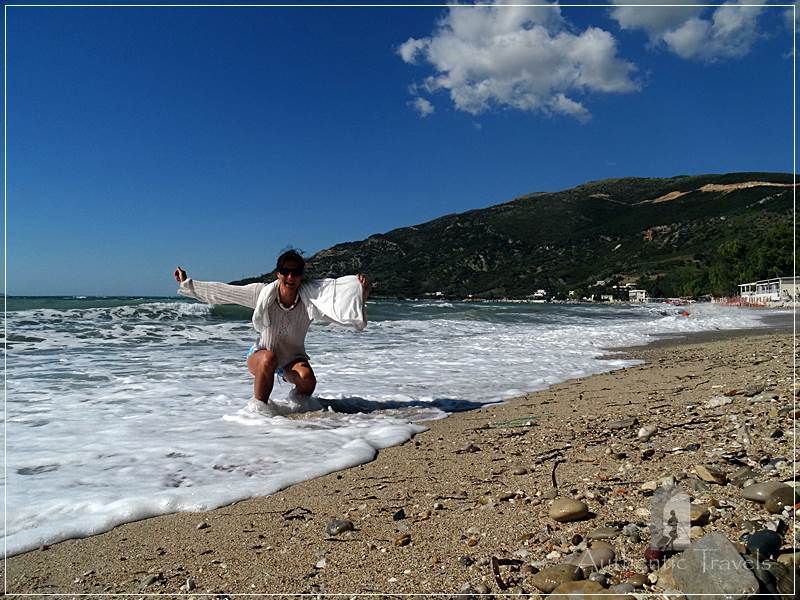
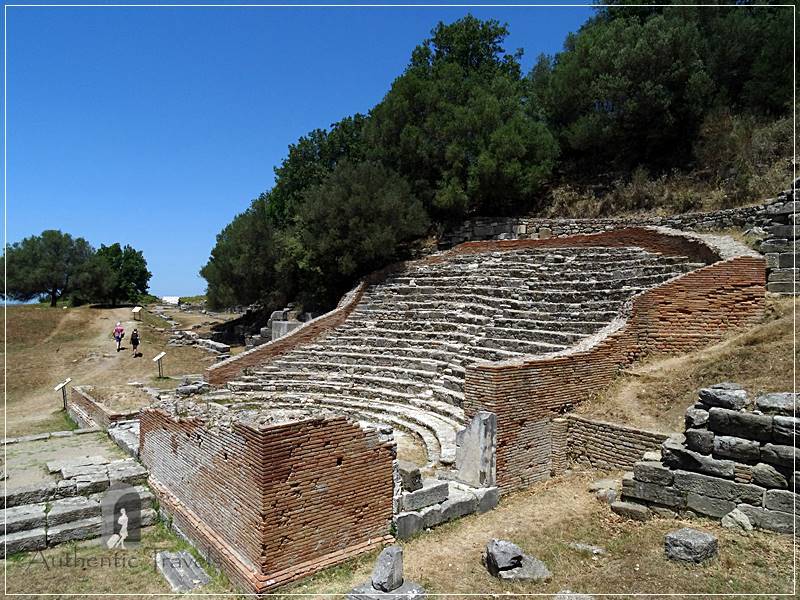
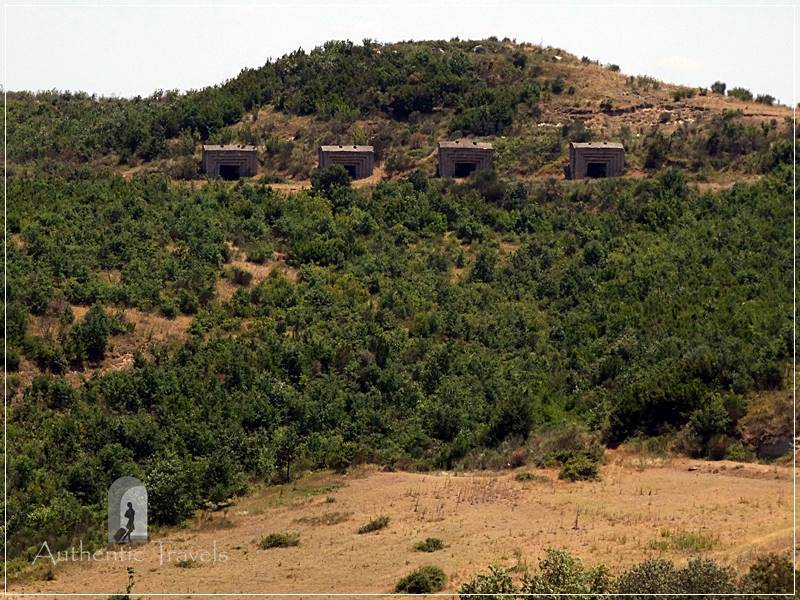

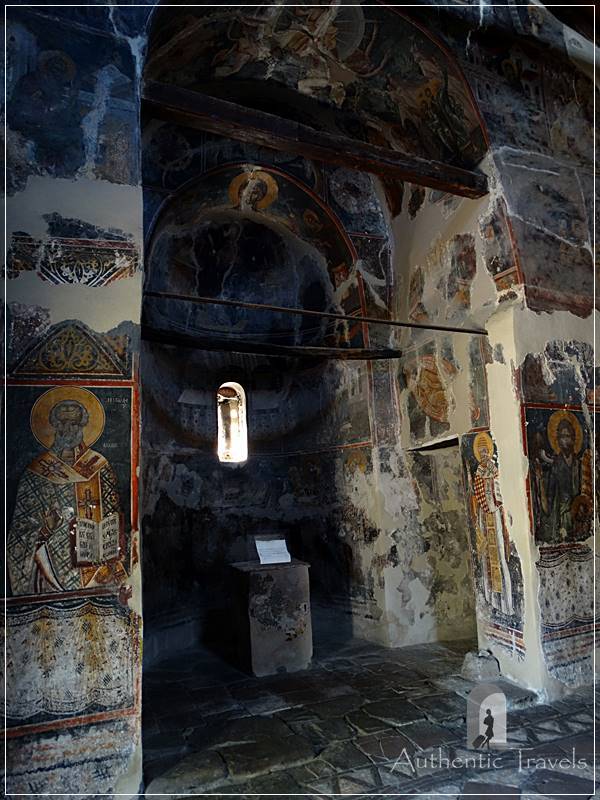
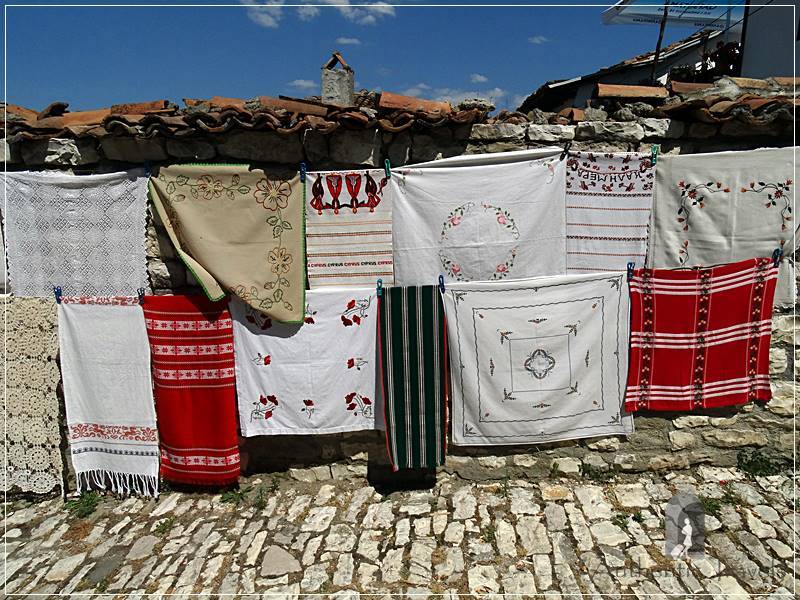
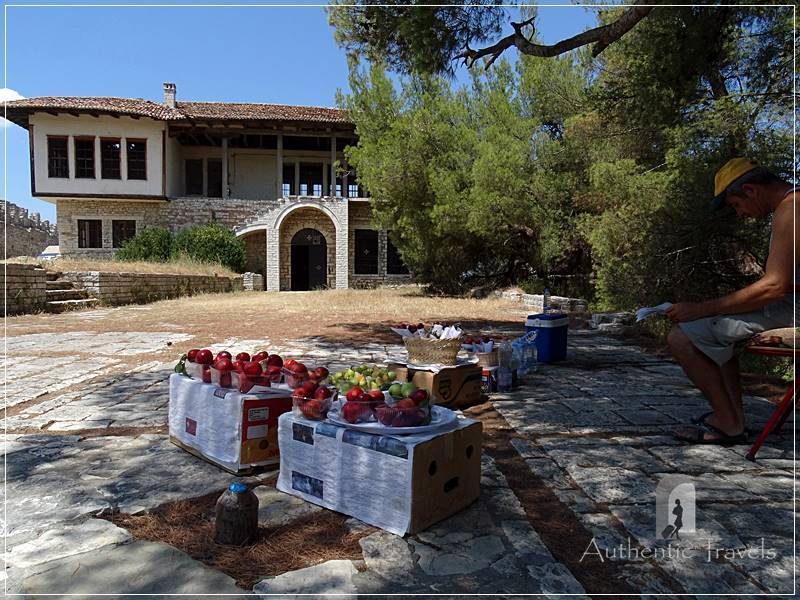
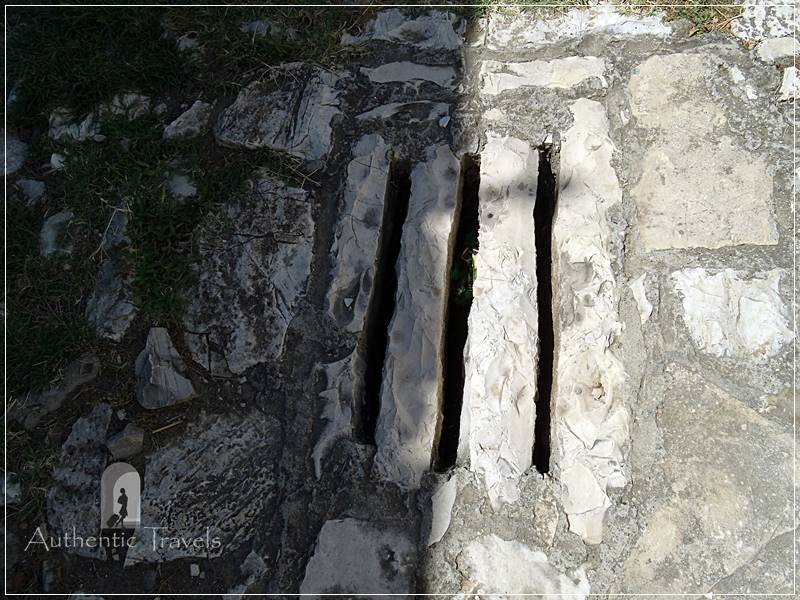
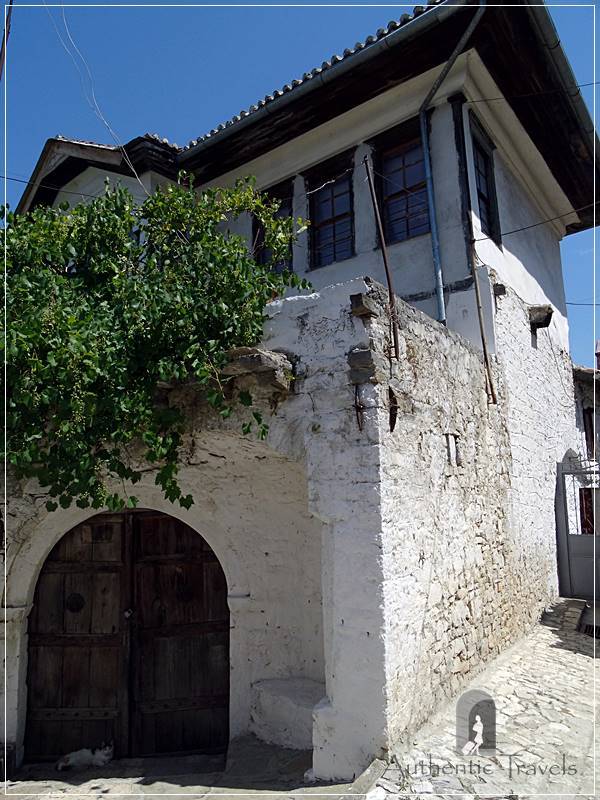
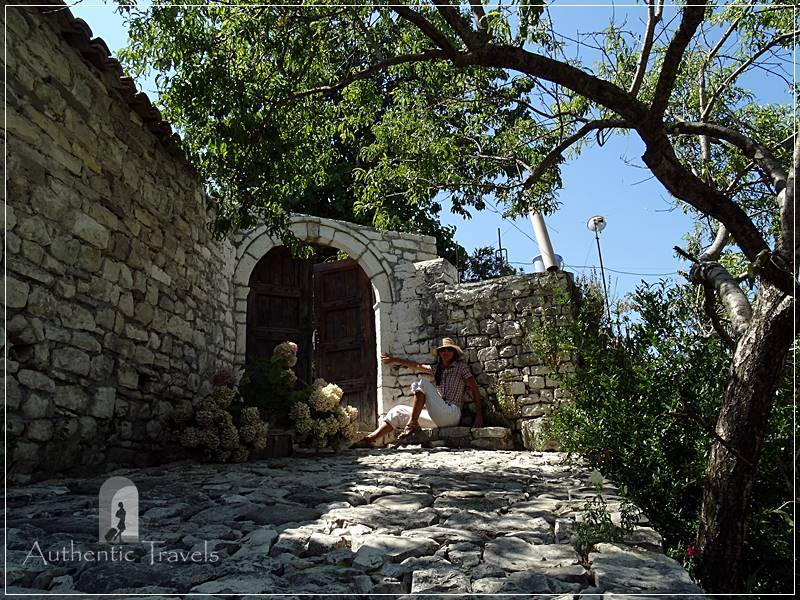
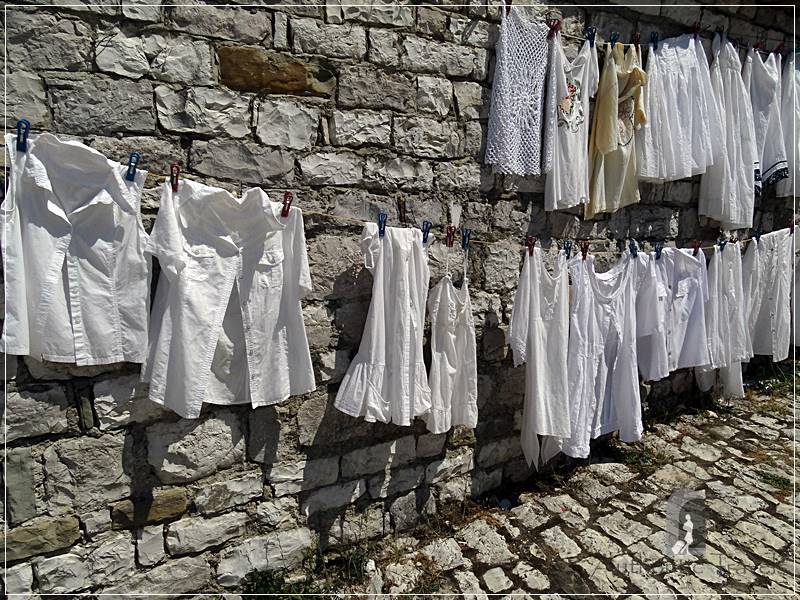
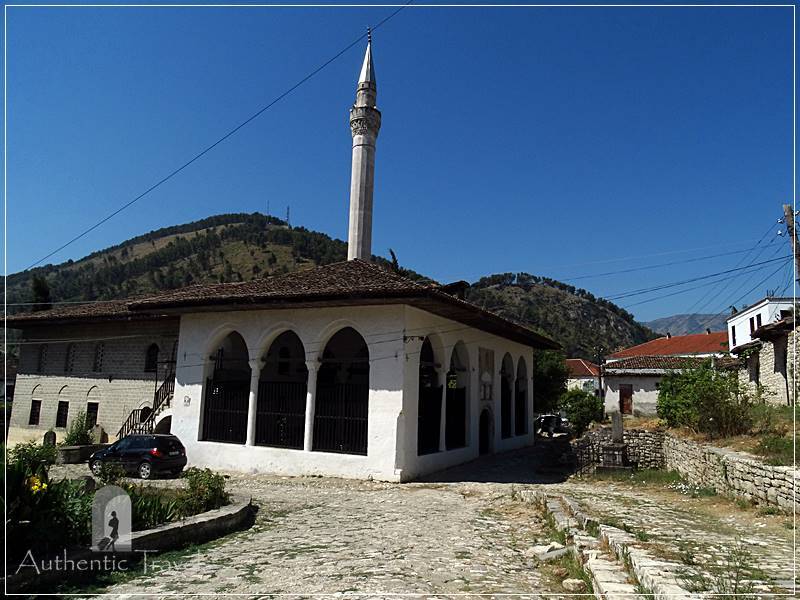
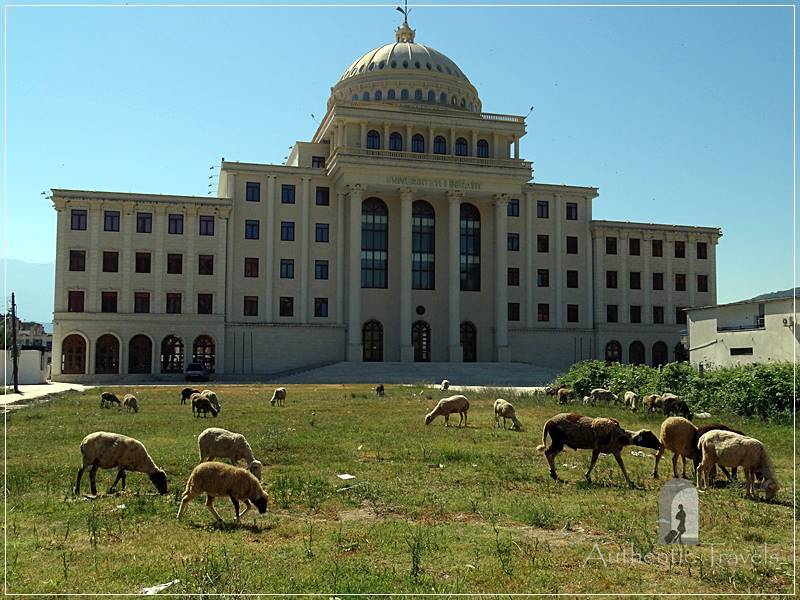
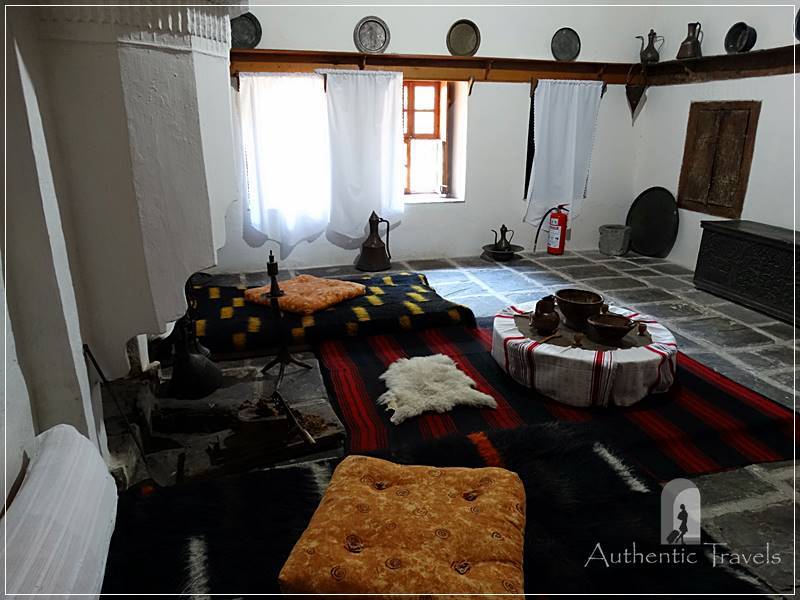
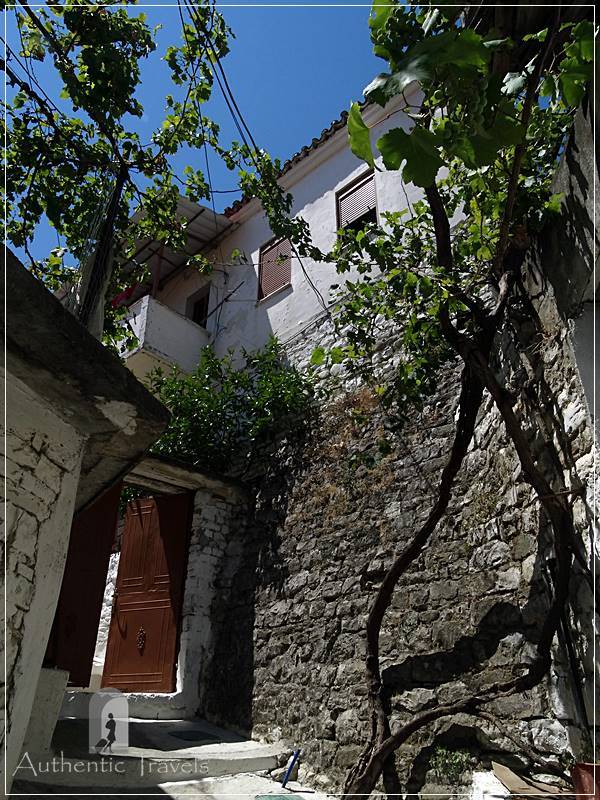
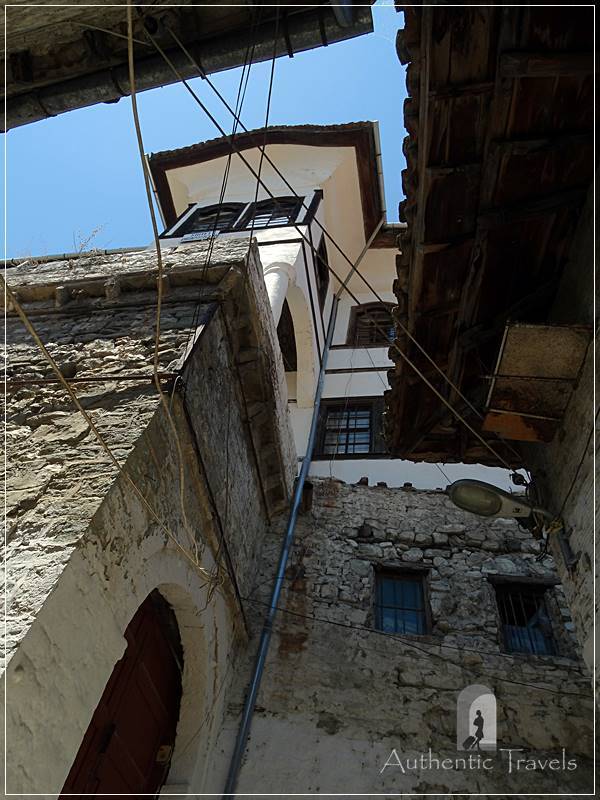
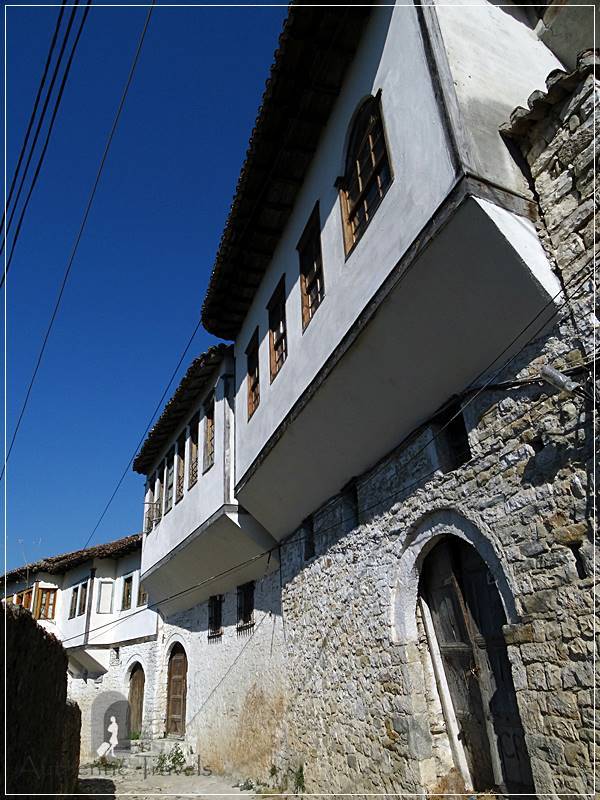

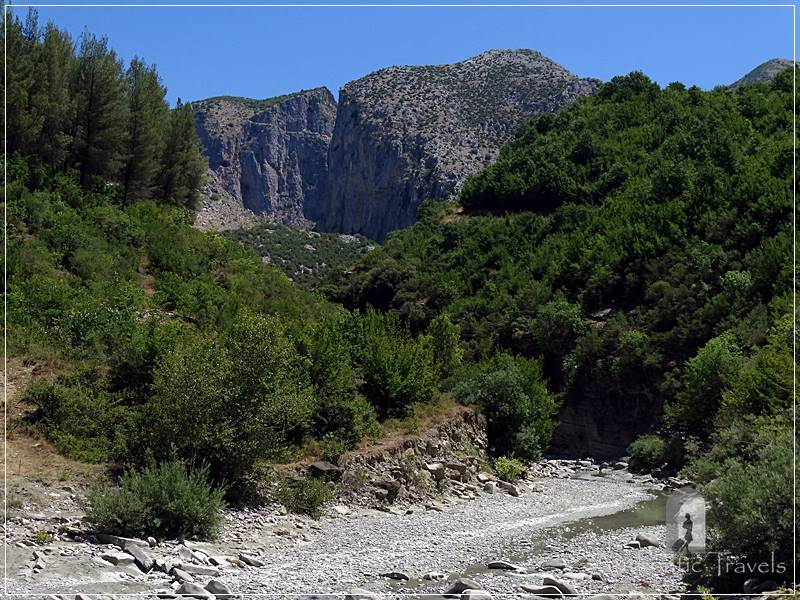
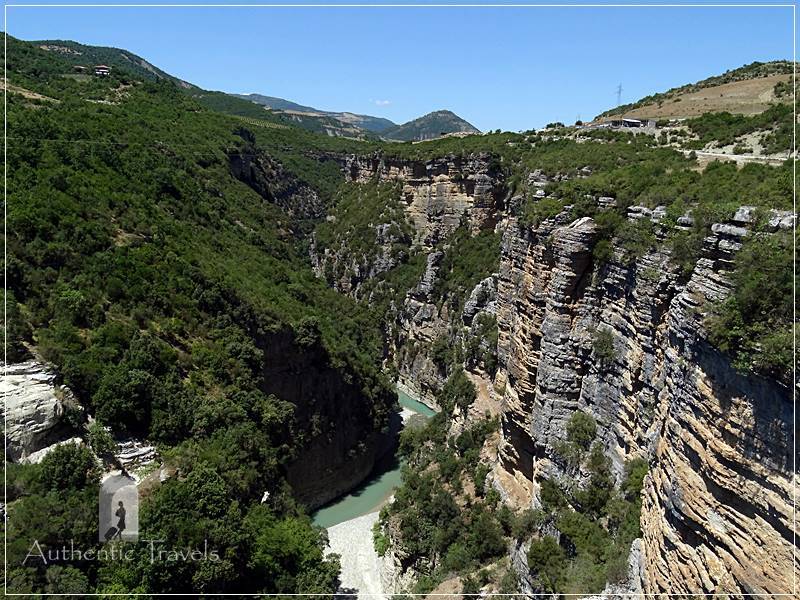
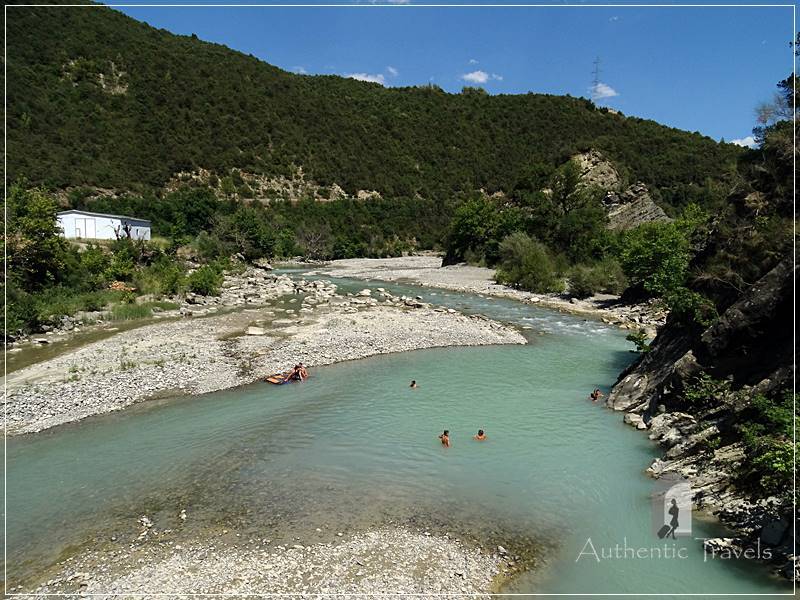
Some amazing sights in this area of Albania. We love visiting UNESCO world heritage sites. We hope to head through Albania next year and will be sure to look up this destination
This looks like a very beautiful road trip. No doubt Albania has some interesting historic sites to visit. However, this doesn’t seem like the kind of country where I’d like to travel by myself. You must be very brave.
Wow, this is truly a great and a wonderful road trip adventure. I love how the shade
of the trees comforted you in the morning. I also love how you had encountered those
men on the road and helped you decide, which roads to follow. And eventually, this
brought you to a beautiful journey with so much great scenery. Thank you so much for
sharing this with us.
What a fascinating trip, the stone buildings and small villages are intriguing. We are often tempted by road signs and end up taking a not so good short cut to places too, but it makes for a more interesting trip I think
After this trip through Albania, I think that as a traveler you use your intuition a lot. You just feel when it is ok, or too dangerous/ risky for you to go somewhere.
So, why did Berat called the city of the 1000 windows? Is it because all the mosques from the Ottoman and churches from Byzantine era have lots of windows? Anyway, the cities still look far from tourists reach. I think it makes it the right time to visit now if one has an opportunity.
The houses are very tall and have lots of windows at the upper floors. At the ground floor, the space it is so limited that you cannot built windows, overlooking the busy street.
I’ve never visited Albania but you’ve definitely wet my appetite with this blog post. Osumi Canyon in particular looks really beautiful! I love that the boys invited you onto their raft.
When you join locals, you will enter their daily lives.
Looks like a beautiful area and so much helpful information too. I’m glad you changed your mind about following the one driver down the dirt road – would have spooked me. Albania has recently moved up on my list of places I’d like to visit.
Well, I live in Romania and I now how some Romanians living abroad are. You must not trust everybody and listen to your gut.
I’ve not yet been to Albania, but I’m really keen to visit. I love these old towns like Berat, still full of history, and keeping up their traditions too. I particularly enjoyed your facts about the Islam connection to this part of Albania. I never knew about their connection to the Ottoman period, but now I do.! Will be sure to visit someday in the future.